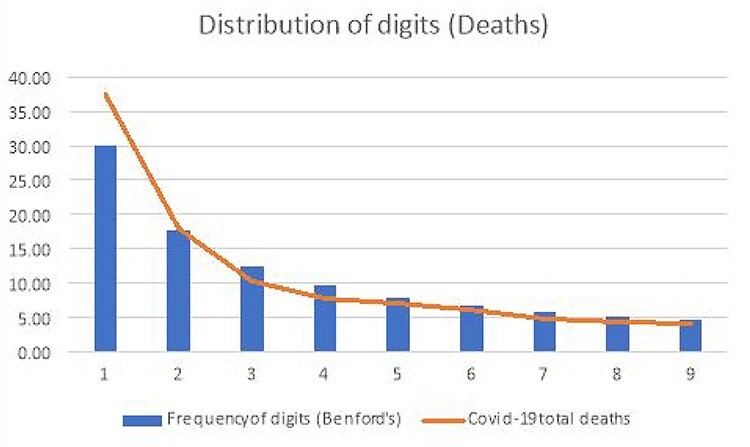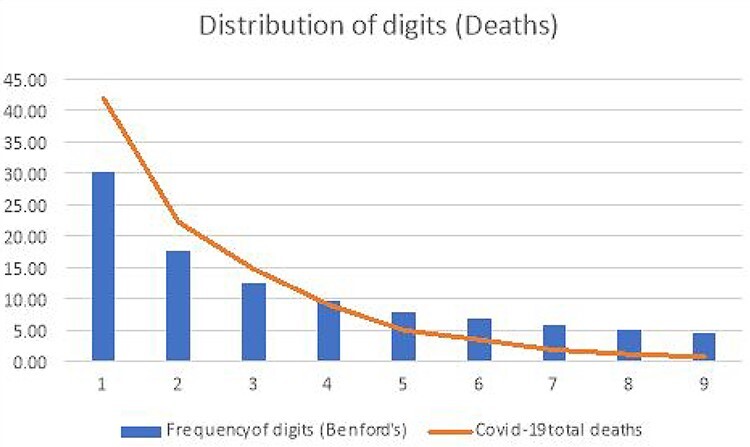The coronavirus disease 2019 (COVID-19) pandemic has created a global healthcare crisis. The impact it has on healthcare and the economy is devastating. Being the second-most populous country globally, India is battling a never-before kind of situation in recent history. As of mid-May 2021, more than 250 000 people have succumbed to the pandemic. However, there are concerns regarding the official numbers released by central and state governments. For instance, both international and national media have expressed doubts about the number of actual deaths and the official figures (for instance, an article titled ‘Non-stop cremations cast doubt on India’s counting of COVID dead’ appeared on website of Reuters (20 April 2021). https://www.reuters.com/world/india/non-stop-cremations-cast-doubt-indias-counting-covid-dead-2021-04-19/). The country is vast, and many remote parts have either none or inadequate medical infrastructure. There are possibilities that a person dying due to the COVID-19 can remain outside the official reporting system. This study uses a statistical fraud detection technique called Benford’s law to determine the nature of the distribution of the first significant digit of confirmed cases and deaths due to COVID-19. Compared to other states, the state of Kerala has lower deaths. As a result, it received positive media attention, both nationally and globally (World Health Organization applauded the initiatives by the government of Kerala to combat COVID-19. https://www.who.int/india/news/feature-stories/detail/responding-to-covid-19---learnings-from-kerala). The current study compares the first digit distribution of the state of Kerala and India to see if these two are significantly different.
The data for the study are from two sources—the district-wise daily COVID-19 data for the state of Kerala is from GoK Dashboard (https://dashboard.kerala.gov.in/) maintained by the government of Kerala. The nationwide daily data for India is from PRS Legislative Reforms (https://prsindia.org/covid-19/cases). The period of Kerala data is from 30 January 2020 to 13 May. The national data starting point is 12 March 2020, and the last entry is 13 May 2021. The data frequency is daily. For Kerala, data points are district-wise daily COVID-19 new cases and deaths, whereas, for national data, it is state-wise daily new cases and deaths.
Sarmiento et al.1 emphasize the need for truthfulness in collecting, processing and reporting COVID data. The use of Benford’s law to examine the quality of COVID-19 reporting is not new. Koch and Okamura2 found conformance of Chinese data to theoretical Benford’s distribution. In contrast, Silva and Filho found out that the Brazillian data did not adhere to Benford’s law. Kilani3 and Campolieti4 found support for the misreporting of COVID-19 data in Post-Soviet states and the USA, respectively. Four statistical tests, namely Mean Absolute Deviation (MAD), Z-Statistic, chi-squared test of goodness of fit, and Kolmogorov–Smirnov test, are used to ascertain the conformance of our dataset to theoretical Benford’s distribution.
The distribution of the first digit of confirmed cases is within the acceptable limit of Benford’s law. However, as for as deaths are concerned, both national data and Kerala data do not comply with Benford’s logarithmic distribution. The MAD of COVID deaths for national data is 0.0171, whereas the MAD for Kerala is 0.0415. The federal data fares better than the state of Kerala. Apart from MAD, the other three statistical tests add to the robustness of the study. Results from our study are in line with Kilani and Georgiou.5 They indicated misreporting of COVID-19 data in various developing countries, including India. The paper provides statistical support to the claims of misreporting of COVID-19 in India. Surprisingly, the data from Kerala also shows non-adherence to Benford’s law while it is praised for the professional handling of the pandemic. Figures 1 and 2 illustrate the COVID deaths nationally and in Kerala.
Fig. 1 .

Distribution of digits—deaths (India).
Fig. 2 .

Distribution of digits—deaths (Kerala).
Acknowledgement
No funds, grants or other support was received for this study.
Conflicts of interest
There is no conflict of interest.
References
- 1. Sarmiento PJD, Yap JFC, Espinosa KAG et al. The truth must prevail: citizens’ rights to know the truth during the era of COVID-19. J Public Health 2020;fdaa240. doi: 10.1093/pubmed/fdaa240. [DOI] [PMC free article] [PubMed] [Google Scholar]
- 2. Koch C, Okamura K. Benford’s law and COVID-19 reporting. Econ Lett 2020;196:109573. doi: 10.1016/j.econlet.2020.109573. [DOI] [PMC free article] [PubMed] [Google Scholar]
- 3. Kilani A. An interpretation of reported COVID-19 cases in post-Soviet states. J Public Health 2021;fdab091. doi: 10.1093/pubmed/fdab091. [DOI] [PMC free article] [PubMed] [Google Scholar]
- 4. Campolieti M. COVID-19 deaths in the USA: Benford’s law and under-reporting. J Public Health 2021;fdab161. doi: 10.1093/pubmed/fdab161. [DOI] [PMC free article] [PubMed] [Google Scholar]
- 5. Kilani A, Georgiou GP. Countries with potential data misreport based on Benford’s law. J Public Health 2021;fdab001. doi: 10.1093/pubmed/fdab001. [DOI] [PubMed] [Google Scholar]


